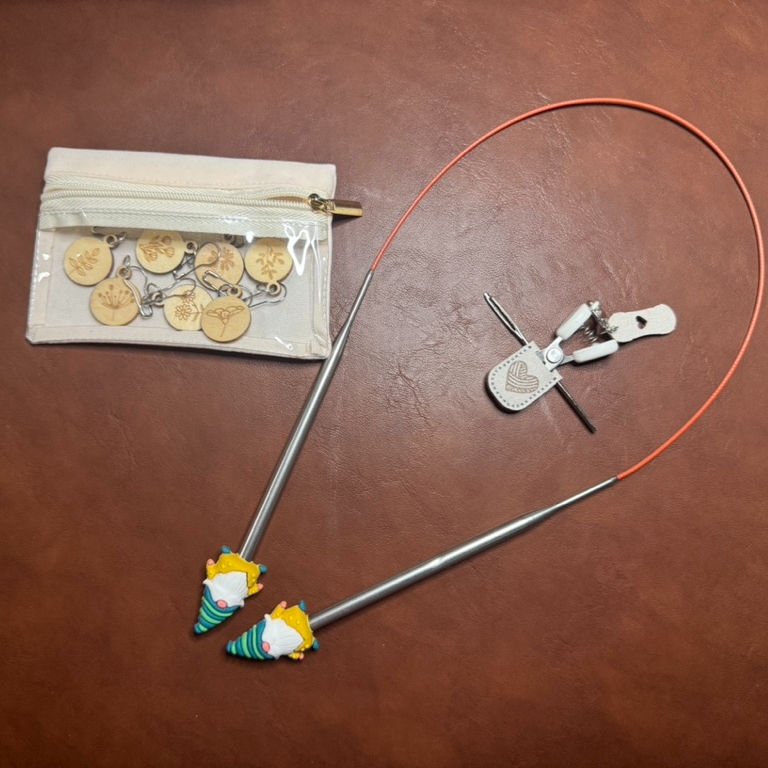I Took My Knitting Through TSA So You Don’t Have To
- Tess Crawford

- Jun 16
- 3 min read
Updated: Jul 12
A Field Report from 30,000 Feet (and Two Airports)
After writing about flying with knitting tools, I did the only responsible thing: I booked a cross-country flight with a bag full of yarn and metal objects to test the theory. Would TSA raise an eyebrow? Confiscate my scissors? Ask me if I was planning to knit a parachute mid-flight?
Spoiler: I got through just fine—for the most part..
The Experiment: Three Bags, Three Strategies
1. The “Do As I Say, Not As I Did” Bag

Contents (non-see-through project bag):
Metal circular needles
Four metal DPNs
Tapestry needle in a magnetic tin
Small embroidery scissors
This bag violated nearly every piece of advice we gave in our first post. The metal tools were in a bag you couldn’t see into, and the magnetic tin was suspicious-looking on the scanner.
Result: Still got through fine. But this approach increased the chance of triggering a bag check. It's not illegal—it’s just a little riskier.
2. The “Mixed Reality” Bag (aka What Most People Probably Carry)

Contents (1-gallon zip-top bag):
Metal circular needles with silicon covers
Tiny scissors (under 4" blade)
Tapestry needle
Clear notions pouch with stitch markers
This bag blended practicality with visibility. A gallon Ziploc isn’t fancy, but it makes everything easily scannable without requiring you to buy special travel gear.
Result: Passed through TSA in both Richmond and Seattle with zero issues—even when my bag was scanned twice (not because of knitting, but due to a forgotten power brick). No questions. No confiscations.
3. The “Ideal” TSA-Friendly Bag

Contents (clear zip pouch):
Bamboo circular needles with silicone tip protectors
Bone needle for darning or fixing dropped stitches
Wooden crochet hook
Small clear bag with stitch markers
Nail clippers or Thread Cutter**
This bag was built for maximum peace of mind. All non-metal tools, soft edges, clearly visible contents, and tools that double as conversation starters with your seatmate.
Result: TSA didn’t even blink. Honestly, I could’ve knit a sweater mid-air and no one would’ve noticed.
** A note on thread cutters:
I’ve seen conflicting reports about whether these are allowed. Some airlines equate them with rotary cutters (which are banned), but mine got through without a hitch. Your mileage may vary.
What This Means for You
You don’t need to go out and buy a bunch of specialty travel knitting gear just to fly. If your tools are organized and visible, TSA generally won’t care.
Best Practices (Now Battle-Tested):
Use a clear bag. It doesn’t have to be pretty—just functional.
Keep scissors small (under 4 inches) or swap them for clippers.
Avoid magnetic tins or opaque cases that might look odd on a scanner.
Metal is fine, but bamboo or wood reduces risk of questions.
Be aware of what’s allowed at your departure and arrival airports (especially internationally).
Final Thoughts
TSA agents are looking for threats, not thread. As long as your knitting tools don’t look like something from a spy movie, you’re probably fine.
So yes—you can bring your knitting on a plane. You can do it with fancy gear or whatever’s already in your studio. Just pack thoughtfully, don’t bury your scissors next to a power bank (like I did), and maybe don’t say “I brought my sharpest tools” out loud at security.
You’re good to stitch and fly!






Comments